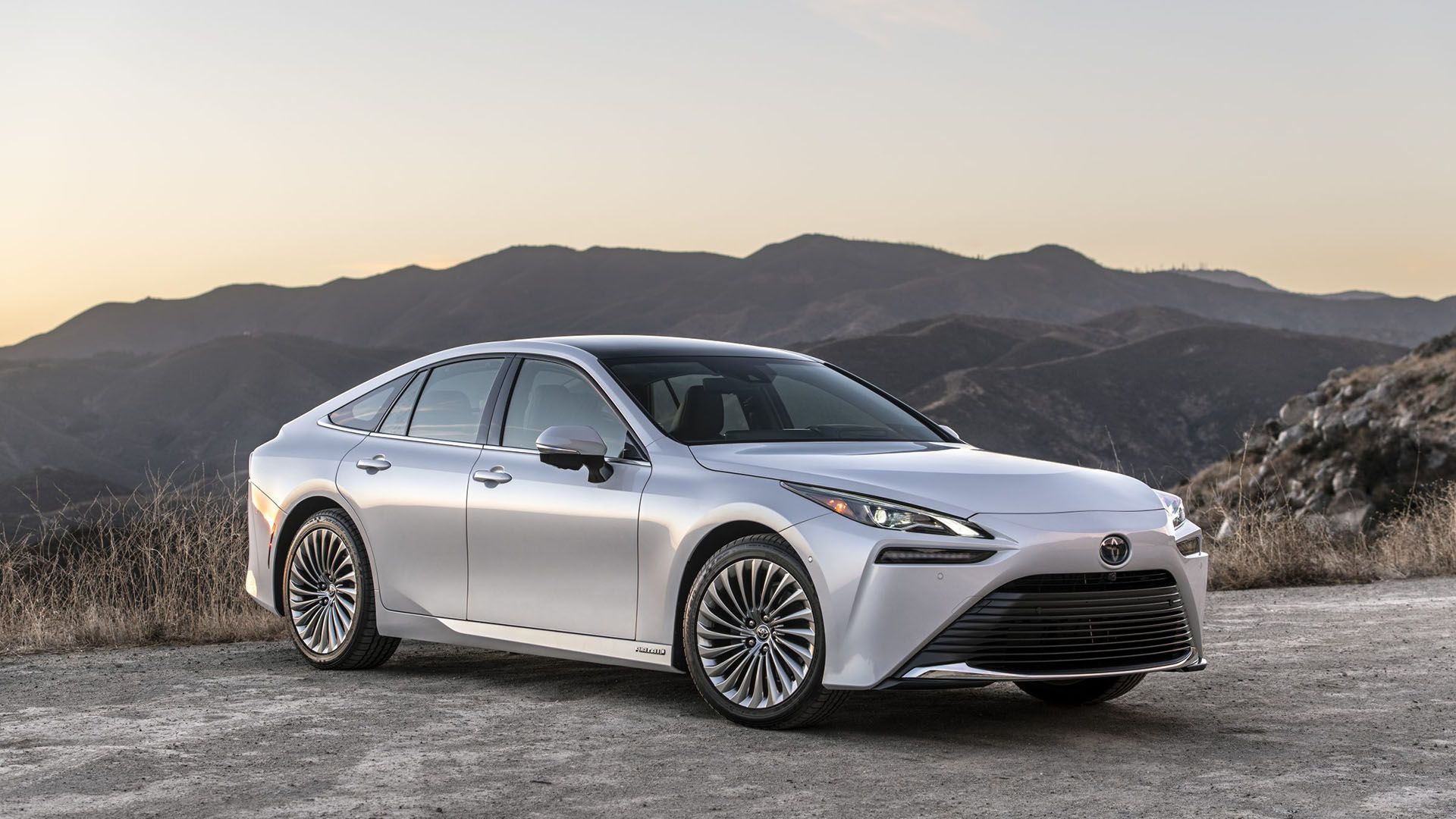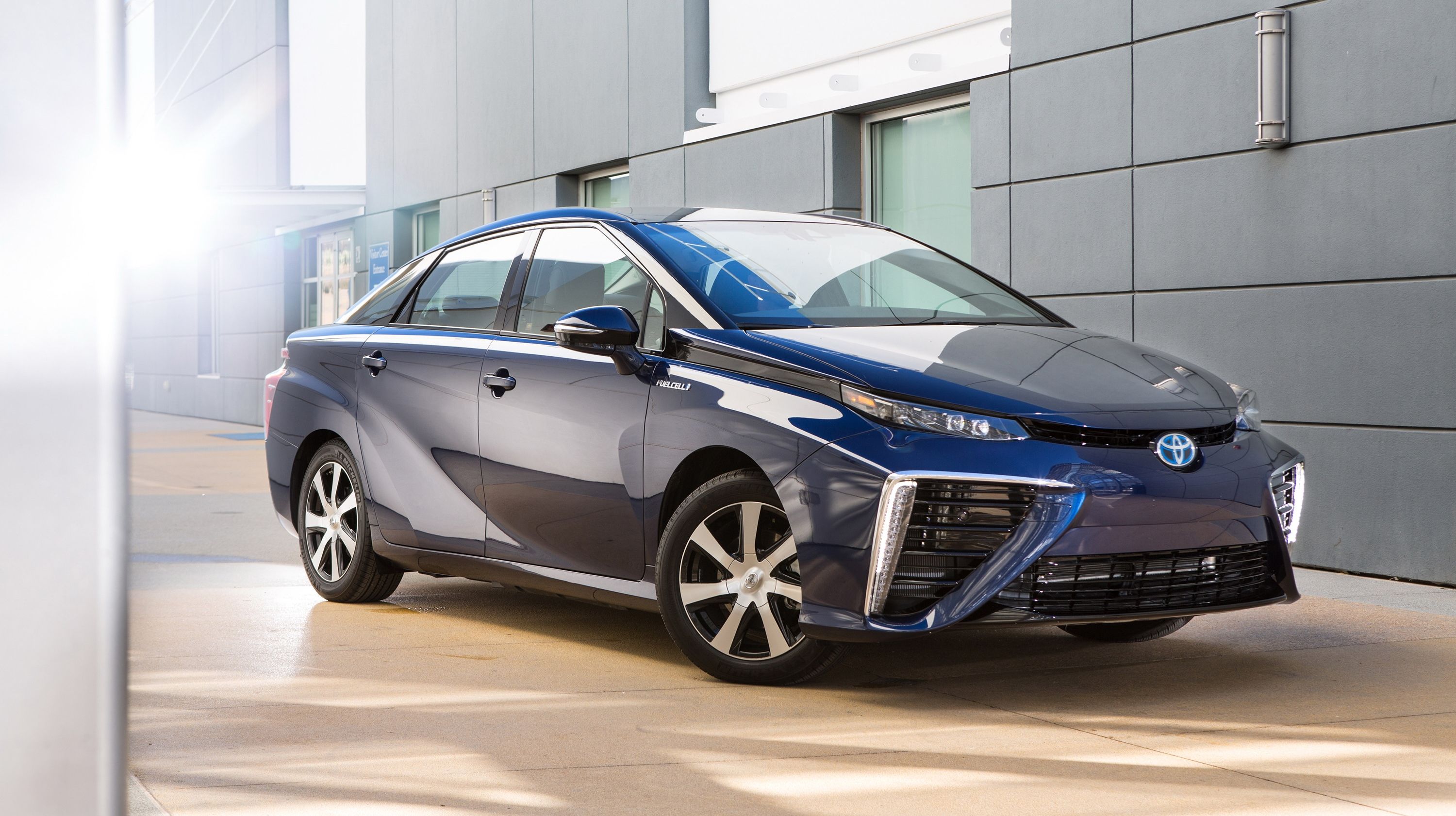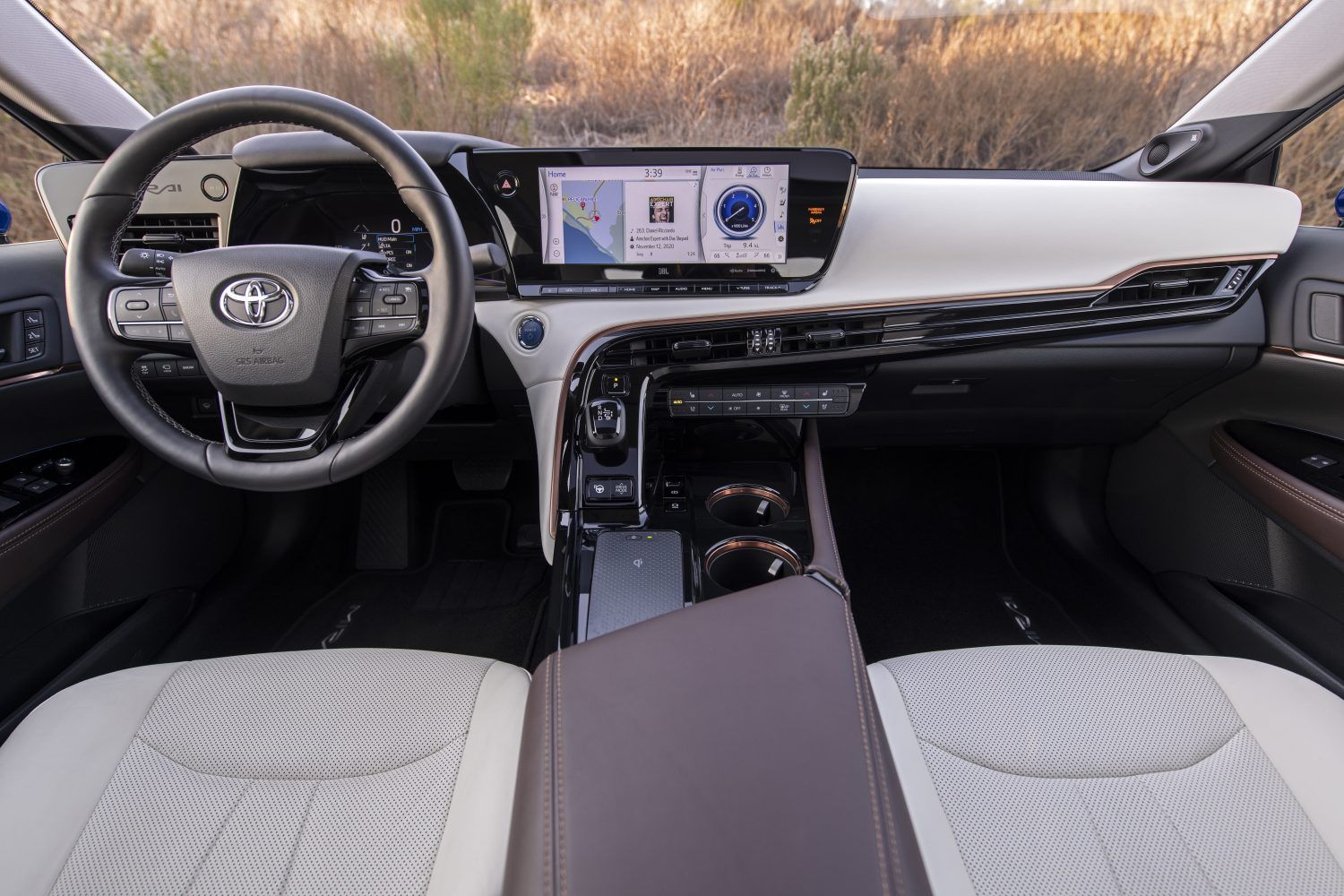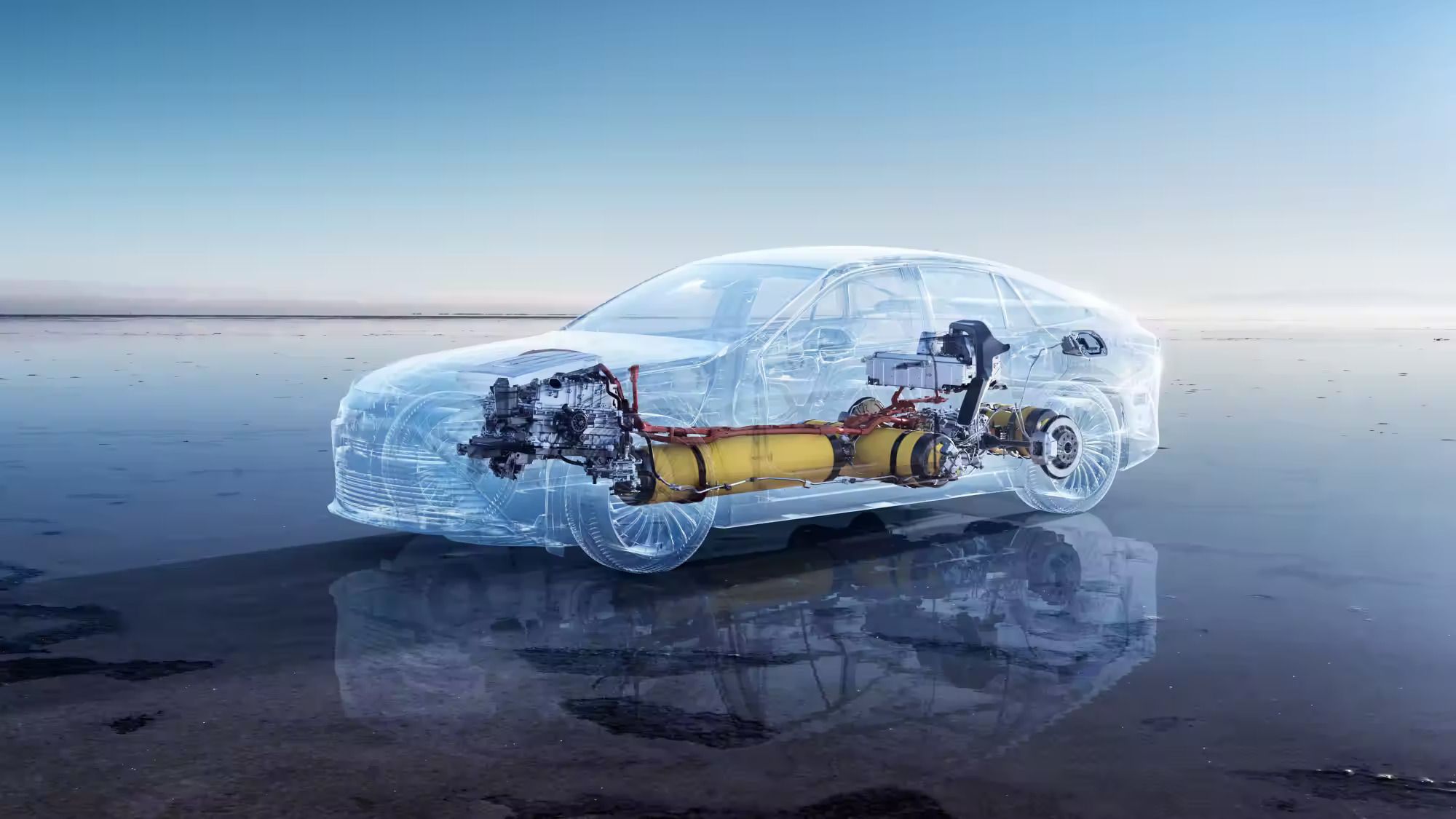The automotive industry has definitely gone through some changes over the years. From technology and computers arriving on the scene in the 1990s and 2000s to electric vehicles marching forward with the 'green energy' movement, vehicle manufacturers are starting to embrace what may be the most radical change yet: Hydrogen power. Leading the charge in this new and exciting frontier is Toyota with its H2-powered Mirai. While having been in production for over half a decade already, this hydrogen-fueled car has enjoyed modest sales numbers despite the limited network of refueling stations. But demand is building, so let's take a closer look at the Toyota Mirai and why this unique vehicle is making headway around the world.
The Toyota Mirai Is The First Of A Kind
At the end of 2015, Toyota released a vehicle that some thought was a joke and, to others, was just a bit ahead of its time — the Mirai. With a name that literally translates to 'future' in Japanese, it appears the latter was spot on. The Mirai was the first hydrogen-powered fuel-cell vehicle for consumers to own, and although it had a slow start, sales have been on the rise in recent years. Its first year in production saw a meager 782 units sold in the United States, with almost half of those sales occurring in August 2016 alone. The Mirai just didn't seem to be as attention-grabbing as Toyota had hoped, and with fueling stations only being offered in California, you can guess quite easily where those purchases took place.
Since then, however, sales have managed to increase steadily over the years. In 2017, US numbers jumped to over 1,800 sold, and 2021 saw the highest number of purchases to date at 2,629 units. You would think that fanfare for a car that runs on the most abundant element in the world would be a little greater, and maybe the newness of the whole idea of hydrogen power has finally started to wear off. As we take in a better view of the Mirai, we can see that not only is it a great alternative to a gas-powered vehicle, but it really does belong in a class all its own when it comes to design, function, and drivability.
The Toyota Mirai Is Second To None
To describe the Mirai accurately, one can definitely use the term futuristic. With its sleek, long lines and 50:50 weight distribution, Toyota's hydrogen-powered flagship surely brings a balance of stability and grace into a genre all by itself. Under the hood rests a 281-hp electric motor that gets its power from a hydrogen fuel cell. Essentially, this cell takes the electrons from hydrogen atoms to power the motor, and the hydrogen, in response, bonds with the outside air to create and expel water. It's quite genius, really, and unwittingly takes you back to chemistry class a little. An added bonus to the drivetrain for the new Mirai includes a rear-wheel drive platform from Lexus that incorporates their Teammate Driver Assist System.
The interior is very pleasant, with curvy features on the dash, faux-leather upholstery, and a 12.3-inch touchscreen infotainment system with 14-speaker JBL sound to top it all off — you almost don't want to get out of the car once you're inside. Other standard features include heated and power-adjustable seats and remote start. Meanwhile, Toyota has definitely brought the future into the present with its updated Human Machine Interface (HMI). This unique feature provides enhanced interaction with the driver through sight, voice, and touch while maintaining ease of use and promoting accessibility. An Advanced Technology Package, which includes a Bird's Eye View camera, front and rear Parking Assist with Automated Braking, and front seat foot illumination, can be added for $1,410. Apple CarPlay and Android Auto come standard as well. With the Mirai holding its own and generally in line with any high-quality sedan in the market today, Toyota is still pushing the boundaries of what the Mirai fully idealized.
Toyota Mirai Pricing, And How To Get One
As of today, the Toyota Mirai and other cars like it still compete with electric- and gas-powered vehicles on the roads. But hydrogen power is definitely making its move in the right direction. To incentivize sales, Toyota is giving buyers of the Mirai up to $15,000 in hydrogen fuel credit, as well as 21 days of complimentary vehicle rentals for when travel takes them away from hydrogen fueling stations. While priced at around $50,000 for the base model and $66,000 for the Limited, owning the future doesn't cost as much as one would think. And you're helping better the planet.
In bringing the Mirai from an idea, through manufacturing, and into the market, Toyota has started to implement their Environmental Challenge 2050, where they aim to not only reduce every new vehicle's CO2 emissions by 90 percent but also eliminate CO2 entirely from the life cycle of the vehicle. Toyota has been systematically and strategically looking at the design, production, use, and disposal to measure the overall environmental impact of the Mirai, and literally started with the manufacturing plants where they are made. From solar panels to fuel-cell forklifts, the Motomachi plant in Japan uses 100 percent renewable electricity on the production lines and for the Mirai and its parts. One thing is for sure — the future never looked so beautifully copacetic.




